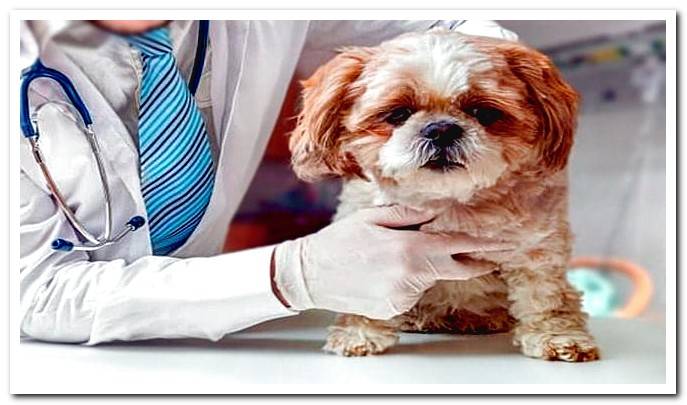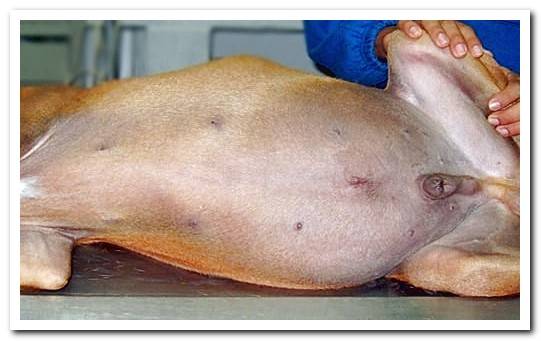
Ascites in dogs can alert us to a serious disorder or disease. Therefore, although at first this liquid spill in the abdomen may seem like a minor problem, it is worth paying close attention.
From Dogsis we are going to explain the causes of ascites in dogs, how are its symptoms and which treatments are the most common.
Index of contents
- 1 What is canine ascites?
- 2 Main causes of ascites in dogs
- 3 Symptoms of ascites in dogs
- 4 How is ascites diagnosed and treated?
What is canine ascites?
Ascites, itself, is not a disease. It is rather a sign, which is not usually extremely serious. However, it can tell us that a dog is suffering from a disorder or a health problem that requires urgent treatment.
Only in some cases, edema can press the diaphragm and cause breathing problems in our furry friends. Fluid accumulated abnormally in the abdominal cavity It can come from internal organs, blood vessels, or even lymph nodes.
Therefore, it is important that a veterinaryn can identify the underlying cause. In this way, you can assess the severity of the ascites and the state of health of the dog.

Main causes of ascites in dogs
Canine ascites can be related to various factors. Therefore, before giving a diagnosis, the specialist will carry out various tests to identify what is causing canine ascites. The most probable causes are:
- Low blood protein levels
- Blood clotting problems
- Bleeding tumors (cancer)
- Congestive heart failure
- Trauma with rupture of internal organs
- Ruptured blood vessels
- Liver-related diseases
- Kidney disorders such as nephritic syndrome in dogs
A dog with ascites can present various symptoms, which can appear suddenly or progressively depending on the cause that causes them.
Symptoms of ascites in dogs
One of the most obvious signs of ascites is bloating that occurs. In other words, the dog’s belly is excessively swollen. In addition, this can be accompanied by other symptoms such as:
- The dog does not want to eat
- Despite lack of appetite, gain weight
- Is lethargic and more tired than normal
- Vomits
- Feel pain and moan at bedtime
- Have trouble breathing
If our dog shows any of these signs, it is important that we get him to a vet as soon as possible so he can examine him.

How is ascites diagnosed and treated?
In the veterinary consultation, the specialist will be able to perform various diagnostic tests on the dog. Some of the most common, in the case of canine ascites, are abdominal radiographs and ultrasounds.
In addition, you may urine tests for more information before recommending treatment. Normally, the fluid that has accumulated in the abdomen will also be emptied and this will be analyzed to determine the cause of the ascites.
Depending on this, the steps to follow may vary. If there is infection, the dog will probably need to be given antibiotics. However, if there is a tumor, surgery may be required. The vet will be the person who can determine which is the best option in each case.
Once at home it is important to follow the indicated treatment and carry out periodic follow-up controls so that the professional can see the evolution of the dog. It is also recommended that we restrict the amount of salt in your diet, because sodium causes body fluids to accumulate, something that we should avoid.
